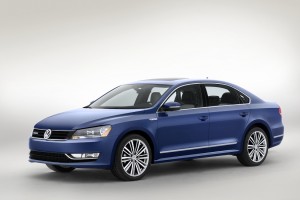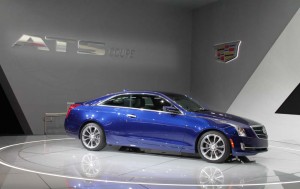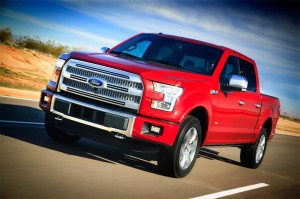
The latest Honda Link not only accesses smartphone music apps, but even displays a new navi app on the LCD screen of the new 2015 Honda Fit.
This year’s North American International Auto Show is flirting with record attendance levels despite the intense cold that has settled over the Motor City – and that may be because show-goers have plenty of cool stuff to check out into Detroit’s sprawling Cobo Center convention hall.
There are 100s of new cars, trucks, crossovers and concept vehicles on display – including more than 50 vehicles making their debut at the 2014 NAIAS. But for many of the visitors who’ve slogged through snow and temperatures dipping at times below zero, the big draw are the new performance, safety and infotainment features rapidly transforming the automobile into a technological showcase.
This year’s Detroit auto show follows the big Consumer Electronics Show in Las Vegas, and there are some notable similarities – no surprise, suggests Art St. Cyr, the head of American Honda’s automotive operations, since for many buyers, “the single most-important technology is their cellphone. They don’t want to be disconnected.”
That’s an observation more and more automakers are taking to heart. Among the coolest new automotive technologies, many allow motorists to pair the car with their smartphones, tablets, laptop computers and other digital devices.
Take the new Cadillac ATS Coupe, the Detroit luxury brand’s first model to offer built-in 4G LTE technology. Parent General Motors’ Chevrolet division also plans to roll-out the high-speed technology on most of its models, starting in 2015, and other makers, including Chrysler’s Ram and Audi, are also building “hot spots” into a growing number of their new vehicles.
(Click Here for more on Chevrolet’s plan to offer 4G service in its vehicles.)
Honda, meanwhile, wants to make its new Fit subcompact a virtual extension of your smartphone, thanks to the new Honda Link infotainment system, which allows a motorist to tap, swipe or pinch the screen, much like with a smartphone, to operate various features.
One of the real breakthroughs, though, is that the Honda Link system can display on the car’s LCD screen the same, $60 navigation app an owner can download for their phone. Compare that to the $600 to as much as $1,500 makers routinely charge for navi systems built into their vehicles.
(Click Here to check out still more high-tech automotive features that debuted at the 2014 CES.)
Automakers have been searching for the best way to let motorists operate their infotainment systems, as well as an increasing number of basic vehicle functions – such as climate control – migrating away from knobs and buttons to onscreen controls. A key challenge is making it simple and easy while avoiding potentially dangerous distractions that can force a driver to look away from the road.
Lexus has been using a mouse-like controller in some models but is migrating over to a new touchpad on its new RC F performance coupe, more like the ones used in laptop computers, to operate the vehicle’s infotainment system and other features.
(Google wants to get a foothold in your next car. Click Hereto find out how.)
While you might think of your car as a costly mechanical device, the reality is that many of today’s models feature more computing power than even the most sophisticated homes. Not a single part of the driving experience is unaffected. And with the first autonomous vehicles set to debut by 2020, the pace of this high-tech revolution is only accelerating.
The Infiniti Q50, for example, offers an optional steer-by-wire system, similar to what’s found in fighter jets, with no mechanical link between the wheels and the steering wheel. Even the mundane gear shifter is feeling the impact. The new Chrysler 200, for example, abandons the conventional gearshift lever for a rotary dial, and the new Acura TLX will adopt a space-saving e-shifter.
While digital technology often catches heat when it threatens to cause distracted driving, much of the coolest new tech can make for a much safer car. The aluminum-intensive 2015 Ford F-150 offers a new 360-degree camera system that can make it easier to spot obstacles or pedestrians – and even hitch up a trailer.
(Click Here for more on the new 2015 Ford F-150.)

VW's Passat BlueMotion Concept makes it harder to justify a hybrid with its high-tech gas powertrain.
And with rare exception, we’re not only getting more cool technology in our cars but are getting more for less, much like what’s happening in the consumer electronics world. Better yet, technology that once might have been limited to the most expensive vehicles now is becoming available on midrange and even lower-end vehicles. The 2015 remake of the Mercedes-Benz C-Class will be offered with the same sweet of so-called Intelligent Drive technologies that debuted on last year’s German flagship sedan, the S-Class.
One of the coolest pieces of technology coming this next year can be used to both improve your driving skills and impress your friends. The new Corvette Performance Data Recorder features both a camera that captures a driver’s eye view of the road but also a system that captures an extensive array of vehicle data along with a high-res map. You’ll now be able to see whether you over-cooked it blasting into that back corner.
Incidentally, the latest microprocessors allowed Corvette engineers to add a number of features to the 2014 Stingray to both boost power while also reducing fuel consumption, the 2-seater getting as much as an EPA-rated 30 mpg.
One trick is to shut off half of its eight cylinders when cruising down the highway. Volkswagen’s Passat BlueMotion Concept, debuting in Detroit, takes that a step further. It starts with an already downsized 1.5-liter four-cylinder engine that can, when cruising or coasting, shut off two cylinders to deliver the sort of mileage you’d have previously gotten only from a hybrid.


